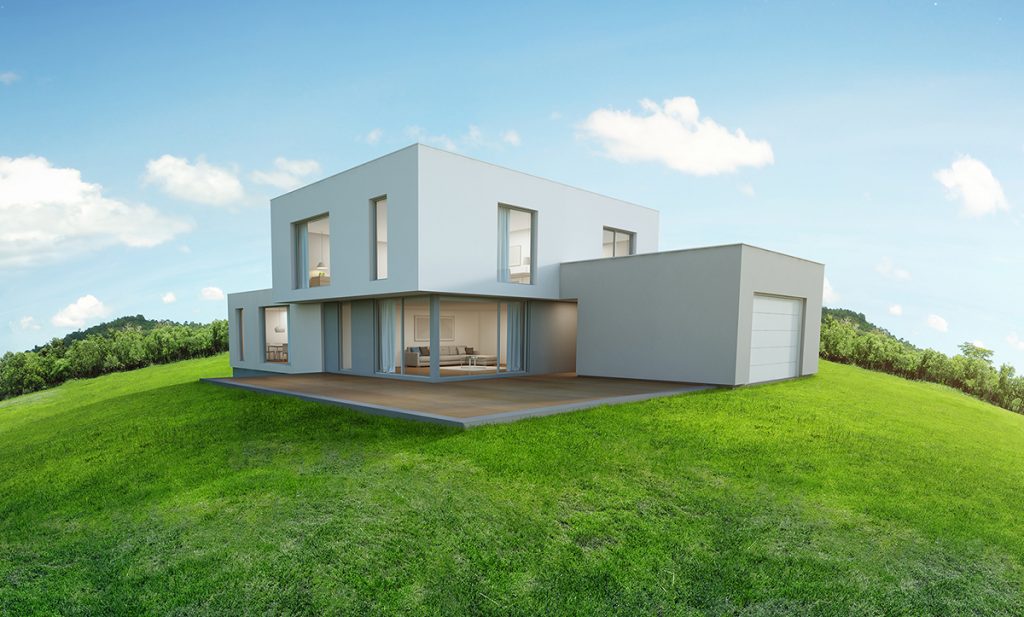Guide to Buying Land and Building

- What are the advantages of buying land and building?
- How do I choose the right block of land?
- Do I have to pay stamp duty?
- Am I eligible for the First Home Owner Grant?
Get all the facts you need for buying land and building
What are the advantages of buying land and building?
Done right, with expert loan advice, buying land and building can have huge benefits. For a start, you get to live in a home that’s purpose built to your needs, in an area you love. You also get to enjoy the lovely, brand newness of your home without ‘wear and tear’ from previous dwellers.
Buying land and building also brings financial advantages:
- When you choose the right area and land, the value of your home is more likely to grow substantially over time
- You may be eligible for more government grants than when you buy an existing home
- The amounts you borrow are initially less because they are staged by completion. The most common stages of completion are land purchase, pad (floor), roof, lockup and final completion. At each stage you draw down the amount needed from your loan, rather than one big amount when you buy an existing home.
When it comes to buying land and building your home, knowledge is power!
Arm yourself with the facts and do your homework to find out which approach suits you best. That way you’ll avoid surprises and unnecessary stress along the way.
How do I choose the right block of land?
Check the area has what you need.
Living in area you love is one of the huge benefits of buying land and then building. At first glance, you may be attracted to proximity to the beach or a beautiful view. Consider the following to ensure you make the best purchase decision:
Services – what services will you need now and in the future? Check if the area has adequate child care, schools, medical services, shopping and public transport. If you’re buying in a brand new area, find out when these essential services will become available? Access are there roads going in and out?
Zoning – what type of constructions are allowed in the area? Is it a general residential zone, or will there be higher density or large lot residential constructions down the track? It’s important to check zoning because the general personality of the area may change significantly in the future. It’s also important to be clear on the zoning restrictions if you’re looking to increase the value of your assets by sub-dividing or building a granny flat. Could your current view be built out by high rise buildings?
Understand the lay of the land
Apart from the size of the block, its important to consider the terrain of the block:
- Tree removal can be very costly. Maybe restrictions on how many and which trees you can remove
- Slope – building can be more complex and expensive on a sloping block. Levelling out a block (if it’s even possible) excavation can add a lot to your construction costs.
- Rocks – what’s the land made up of? Lots of rock in the ground may add to your costs, requires more excavation.
- Forces of nature – is the area in a high fire zone? Is it prone to flooding? Important to know this because it may create challenges for getting home insurance down the track.
Do I have to pay stamp duty?
If you buy land, then build a home later:
Stamp duty is payable on the land’s purchase price. In this scenario, your builder starts construction when settlement has taken place and the land is in your name.
Try to arrange for settlement to happen at the same time as building plans are appoved by council. This will help minimize your borrowing costs.
If you don’t want to make any repayments until your new home is built, you can ask for a price ‘on completion’. In this scenario, the builder purchases the land and borrows money to cover building costs. The builder recoups costs once your loan comes into affect.
You pay stamp duty on the full purchase price of your land and house, as well as the following costs:
- stamp duty and solicitor’s fees on the land purchased
- builder’s loan costs (fees, interest)
- construction costs
Am I eligible for the First Home Owner Grant?
Typically, most state governments tend to subsidise those buyers buying a new home over an established one. In NSW the $7,000 First Home Owner Grant was discontinued in 2012, and there is now a $10,000 First Home Owner Grant for new homes available.
If you’re not a first time buyer, you can still get a $5,000 grant for new homes – which means even if, for example, you’re after self-employed home loans for your second property, you can still benefit.
Similarly, in Queensland, the $15,000 Great Start Grant helps those buying or building a brand new home, while the Australian Capital Territory only targets new or renovated properties with its $12,500 grant.
For more information about First Home Owners Grant and the New Homes Grant in NSW, visit osr.nsw.gov.au.



